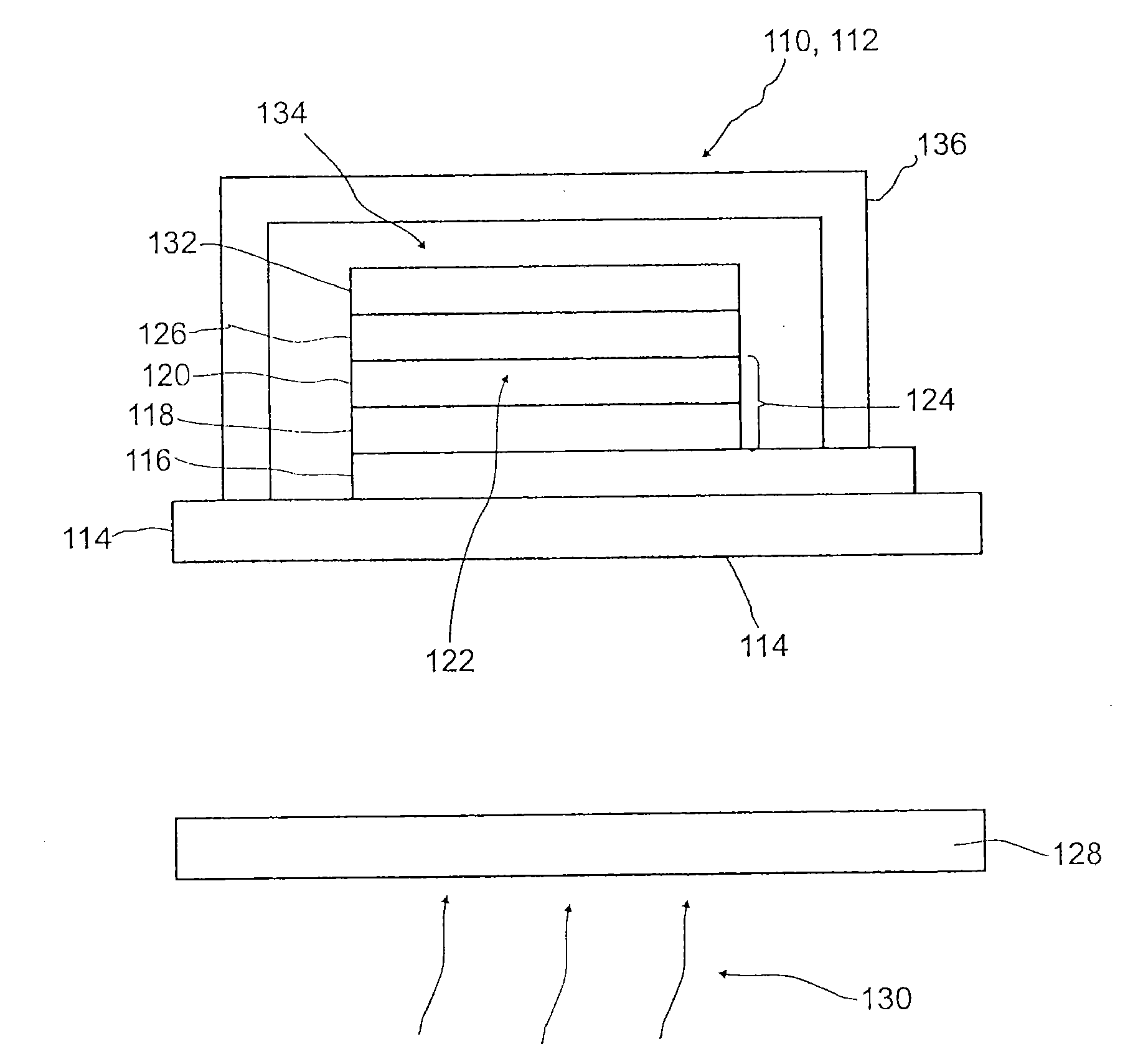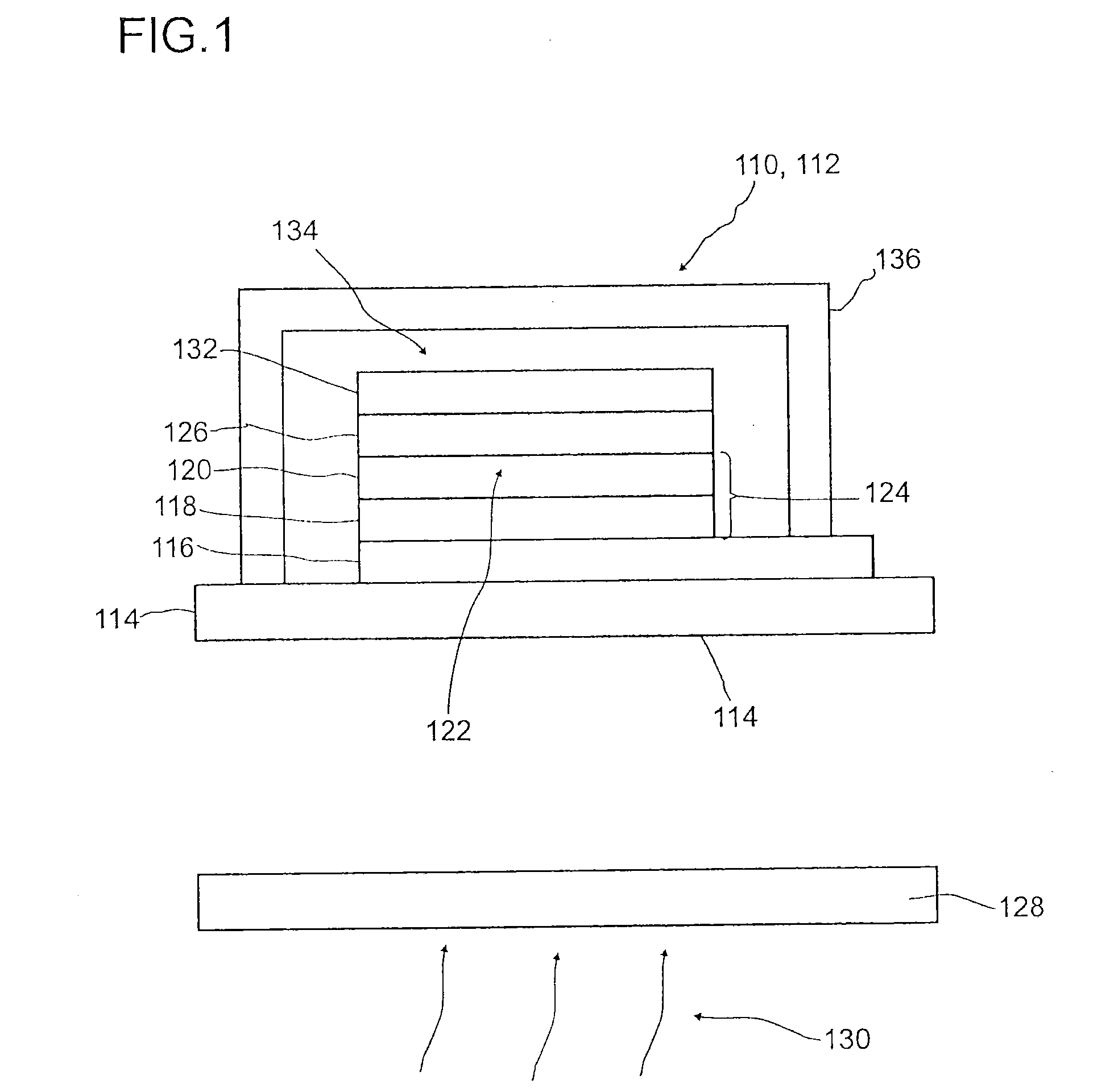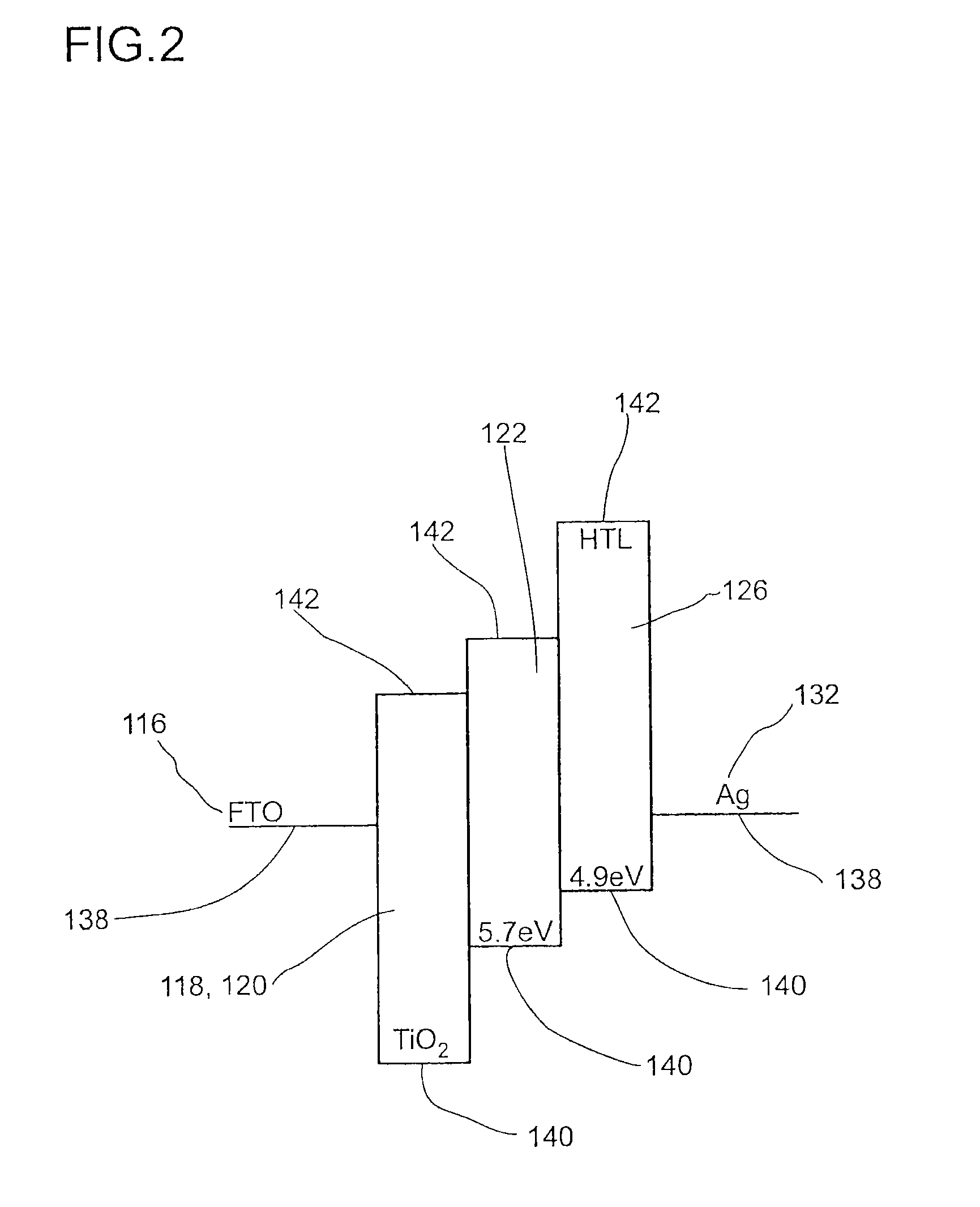Photovoltaic element with increased long-term stability
a photovoltaic element and long-term stability technology, applied in the field of photovoltaic elements, can solve the problems of high cost of technology, general limited proportion of light which can be used by dyes, and stability problems, and achieve the effects of preventing recombination, good suitability, and facilitating the regeneration of dyes
- Summary
- Abstract
- Description
- Claims
- Application Information
AI Technical Summary
Benefits of technology
Problems solved by technology
Method used
Image
Examples
examples 2 to 5
Photovoltaic Elements with Spiro-MeOTAD as Organic p-Semiconductor and Various Longpass Filters
[0261]As inventive working examples (examples 2 to 5), four photovoltaic elements were first produced according to the above-described example 1. In addition, these photovoltaic elements, however, were each provided with a longpass filter on the non-FTO-coated side of the glass substrate.
[0262]The longpass filters used in this case were commercially available glass longpass filters of the LCGG-X-2X2 type from LASER COMPONENTS GmbH in 82140 Olching, Germany, X designating the characteristic edge wavelength λLP, namely:[0263]Example 2: LCGG-385-2X2, λLP=385 nm[0264]Example 3: LCGG-420-2X2, λLP=420 nm[0265]Example 4: LCGG-435-2X2, λLP=435 nm[0266]Example 5: LCGG-450-2X2, λLP=450 nm
[0267]These filter types are UV filters with their own glass substrate, which has been placed directly onto the glass substrate of the photovoltaic element. However, another structure which is possible in principle ...
example 6
Method for Production of the UV / VIS Protective Varnish Layers
[0283]In order to test the optical efficacy of varnishes as a longpass filter 128, UV protection layers were first produced in the form of varnish layers on glass substrates. To produce the protective layers, the commercially available HS (high solids) clearcoat, scratch-resistant VOC from Glasurit was used. It likewise comprises the diluent and hardener components. To produce varnish layers on the glass substrates, the varnish was applied by means of a spin coater at 1000 rpm to 25 mm×25 mm front-side cell cover glasses for 30 sec. Subsequently, the cells were heat-treated at 60° C. for 2 h.
example 6.1
UV Protection Varnish Comprising the UV Absorbers Carboprotect and Tinuvin 400 (Full UV)
[0284]In addition, samples were produced analogously to example 6, in which commercial UV absorbers were added to the varnish as the matrix material. Stirred into a mixture of: 2.5 g of clearcoat, 0.41 g of diluent and 1.25 g of hardener were in each case 78 mg or 39 mg of commercial UV absorber Carboprotect Xymara or Tinuvin 400.
[0285]300 microliters of this solution was applied with a spin coater at 1000 rpm to 25 mm×25 mm front-side cell cover glasses for 30 sec. Subsequently, the cells were heat-treated at 60° C. for 2 h.
PUM
| Property | Measurement | Unit |
|---|---|---|
| wavelengths | aaaaa | aaaaa |
| wavelength | aaaaa | aaaaa |
| wavelengths | aaaaa | aaaaa |
Abstract
Description
Claims
Application Information
 Login to View More
Login to View More - R&D
- Intellectual Property
- Life Sciences
- Materials
- Tech Scout
- Unparalleled Data Quality
- Higher Quality Content
- 60% Fewer Hallucinations
Browse by: Latest US Patents, China's latest patents, Technical Efficacy Thesaurus, Application Domain, Technology Topic, Popular Technical Reports.
© 2025 PatSnap. All rights reserved.Legal|Privacy policy|Modern Slavery Act Transparency Statement|Sitemap|About US| Contact US: help@patsnap.com



